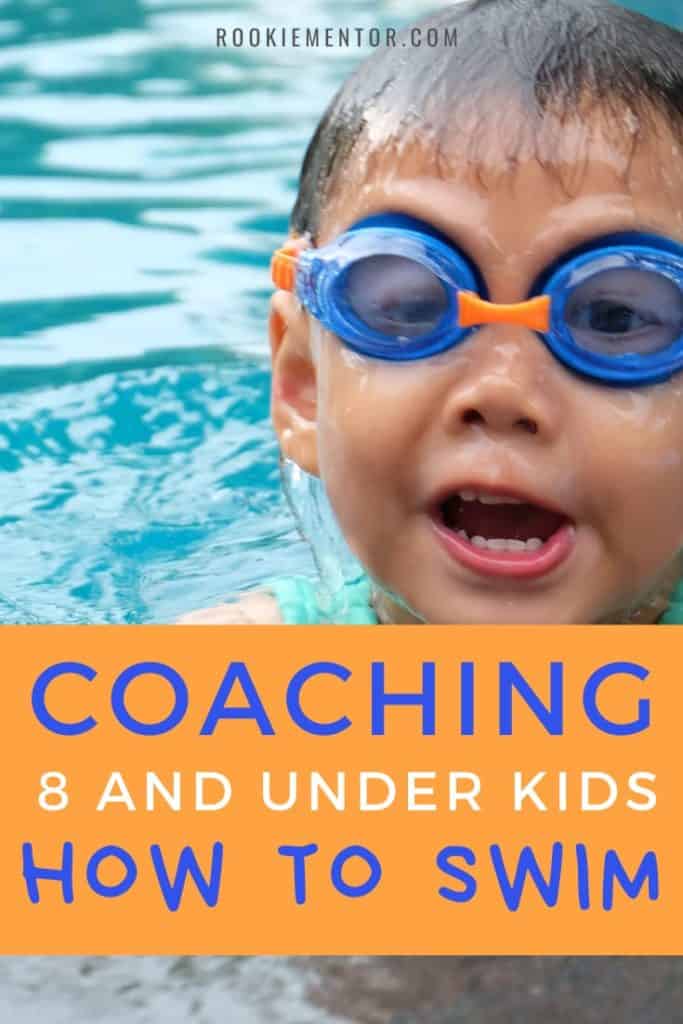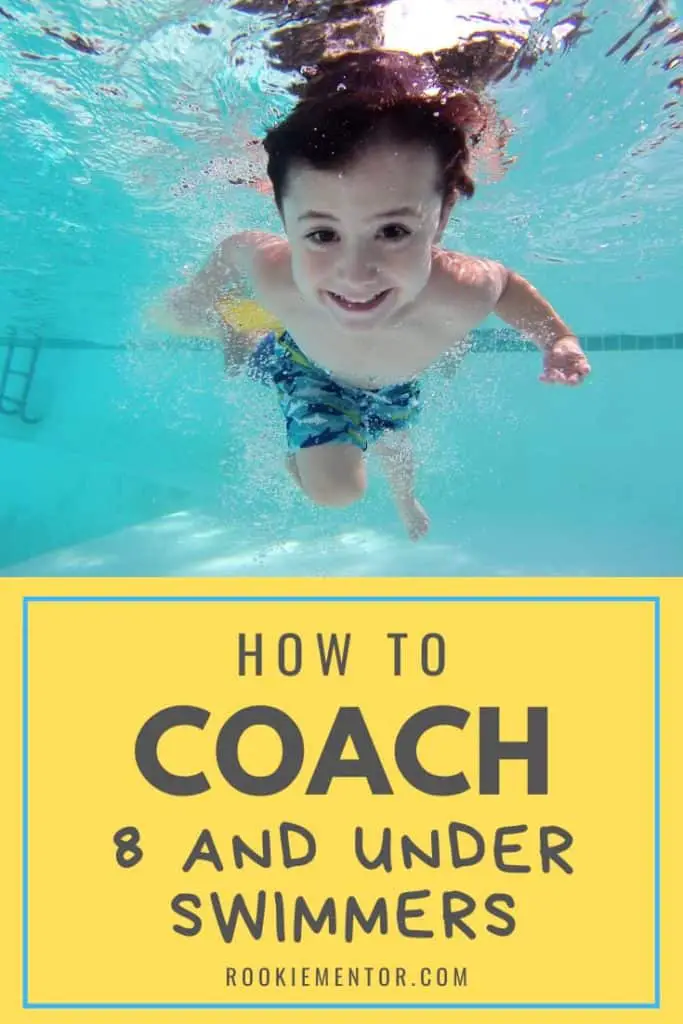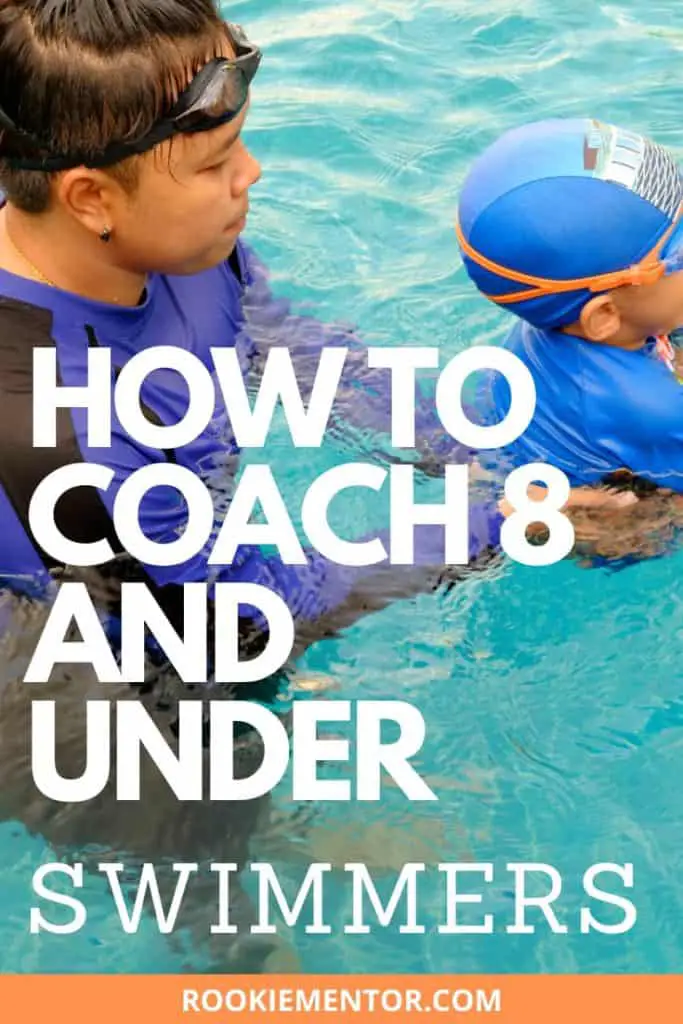Coaching 8 and under swimmers can be a very challenging, though extremely rewarding undertaking. If this is your first time coaching young swimmers, you may be wondering what to expect and how you can best teach and encourage your students.
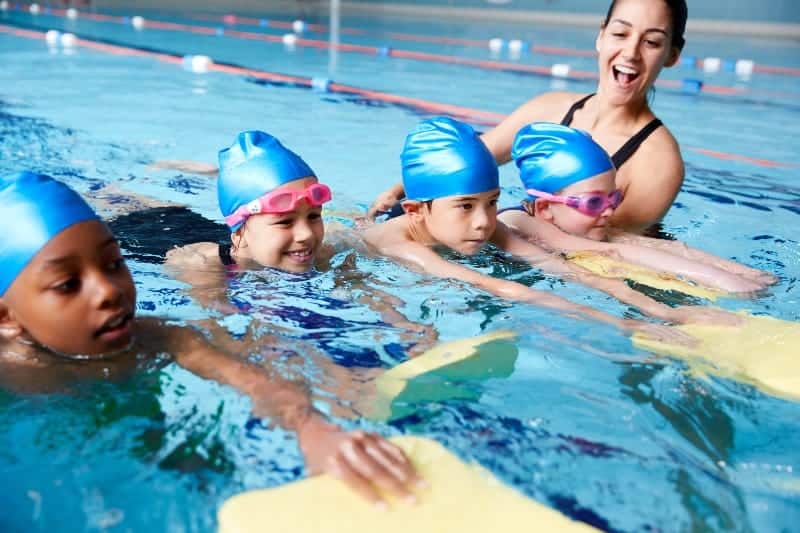
How To Coach 8 and Under Swimmers: Whether you are teaching competitive swim to a team, or taking on one student at a time for private lessons, the coaching basics are the same. Your role as coach is invaluable in teaching kids to have confidence in the water, learn and perfect swim techniques, be part of a team and engage in healthy competition.
Your first job as coach is to teach or reinforce basic water safety and water confidence. Then, once the basics are down, we suggest children as young as 5 can begin learning the different swimming techniques, forms and strokes. Along the way, you will foster good sportsmanship and help your students build strong relationships with you as their coach and with each other.
Here is our method for how we think you can achieve this.
Instilling Water Confidence
Successful swim coaching is as much about building water confidence as it is about building skills. Take a look at any basic level mommy and me swim class and one of the first things they do is to have the baby get used to the water around them, on their head and on their face. Older kids must get used to being fully submerged in the water without getting it in their eyes, nose or mouth.
At this age, you will receive students at a variety of swim levels. Some children have been swimming since they were babies, and others are just beginning to get used to being in the water without a life vest or other flotation device. For students who have never spent much unassisted time in the water before, and even for those who have; the first step is instilling basic water confidence.
Skill can be taught, but a love for the water must come naturally. A healthy fear and respect of the water should also be instilled at this age or younger. Children should know how to float on their backs and swim to the edge in any survival situation. Many swim lessons at this age are focused on teaching this valuable skill.
Even as adults, we don’t always particularly enjoy having our face and ears submerged underwater. For children, even those who love spending time in the water, having their mouth, nose, eyes and ears completely submerged can be a new and even scary experience.
Students must be taught how to cope with and adapt to these new sensations, and how to avoid swallowing or inhaling too much water. This is a great age to introduce swimming gear such as goggles, nose clips and earplugs if the child hasn’t had exposure to them already.
The more confidence children have in the water, the more energy and focus they will have devoted to proper technique and speed. So even if it seems like a repeat for those students with more experience, this foundational step is important for advancing to the next levels of swimming.
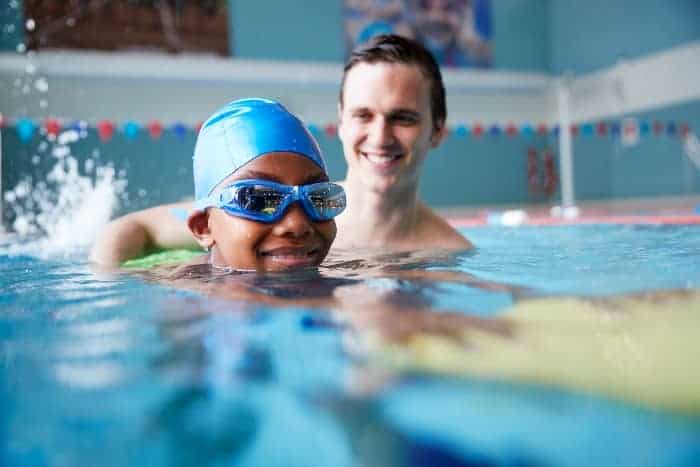
Introducing Swim Techniques
Once students are confident carrying themselves in and around the water, you can begin to teach techniques. The most important skills to learn at this age will be the 4 basic swim strokes. Older students (in the 5-8 age range) should be able to quickly pick up on the freestyle stroke, breaststroke, backstroke and butterfly stroke.
Most kids will gravitate toward a favorite stroke fairly early on, but it is important they know the basic foundation of each stroke and consistently practice all of them – not just the one they prefer.
The backstroke is usually one of the first strokes taught, since it has become common to instruct children to float on their backs to safely get to the edge of a pool in a survival situation. After the backstroke, the next easiest skill to learn is the breaststroke. Kids often find this stroke the least intimidating to learn since their face still remains entirely out of the water for majority of the time.
Many kids also enjoy the freestyle stroke, or front crawl, because it allows them to move through the water faster than any of the other strokes. The butterfly stroke is arguably the hardest of the 4 basic strokes and will take more technique and effort. This is usually the last stroke younger students will learn and master.
At this age, repetition is key. At first, you may need to help guide the child’s arms and body into the proper positions as they are adjusting to these brand new skills. You will want to start off at first with shorter distances, and as children get used to the way the water and their body feels, they can work their way up to swimming a full pool length. Demonstration is also important, and as the students watch you and their other teammates performing each stroke, it helps them visualize their own technique as well.
Perfecting Swim Techniques
Once a student has learned to identify and perform the 4 basic swim strokes, then you are ready to move on to perfecting and developing these skills, as well as building speed.
Again, the key here will be repetition as well as encouragement. Some students are self-motivated and enjoy practicing new skills over and over again until they get them right. Others are easily discouraged and may cry or want to give up. It is important to teach your students how to push past this initial frustration and negative self-talk and remind them that new skills take time and practice.
Team-Building
Especially at this age when children are most impressionable and beginning to understand the importance of peer approval and acceptance, team-building is an important part of any successful swim team. Drills are one great way to begin to instill this dependence on one another and support of one another. Casual team discussions before and after class help everyone bond and learn more about each other as well.
Depending on how your swim school or program is structured; your students may not be part of a team. If you are doing private lessons, you and the student make up the team.
At this age, feedback from coaches and teachers is becoming increasingly important as children are growing more independent from their mother and father. Building a rapport and trust with each individual student will prove invaluable in your coaching success.
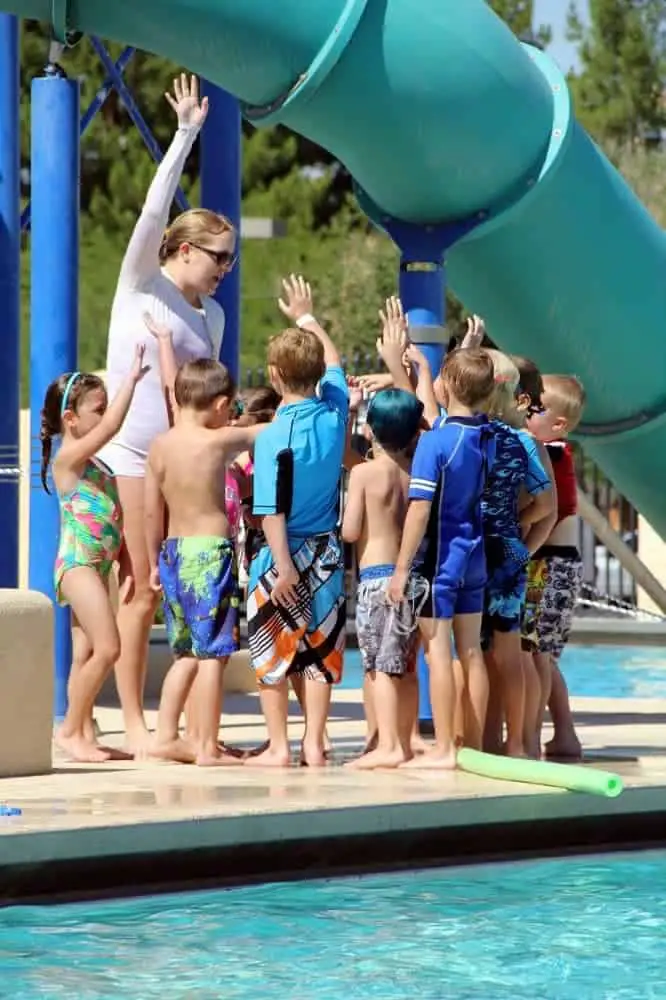
Incorporating Fun
It is a good idea to have some fun with your students once in a while! Letting loose and having some fun is particularly important for young students who have been sitting still in class all day, or who come to swim practice multiple days per week and may be growing weary of all the drills.
You can either start your swim session off with an icebreaker or end with a fun game. Experiment with a few different ways of incorporating fun into the lesson without throwing everyone too far off track. Some students may have a hard time “getting back to business” and would do best to enjoy the silliness at the end of their practice as a reward.
Introducing Competition
Students at this age may have not yet been introduced to the concept of competition before. Some students may be coming to you purely for lessons, which means some people may think this phase isn’t as critical. However, we are believers here in always teaching your students to push themselves to improve, so competition can come in the form competing against themselves. Even a 4 year old can be challenged to float on their back for 45 seconds, instead of 30.
Folder children looking to compete, it is important to begin to get ready for the process, procedures and expectations of a swim meet. You should also discuss and demonstrate with your team the discipline they will need and the proper attitude of good sportsmanship they should have before, during and after a big competition.
Individualize
It is important to note that each student will develop at their own pace and every child has their own unique learning style. The more time you spend getting to know each child through your coaching sessions, the better you will be able to discern what they need in order to grow.
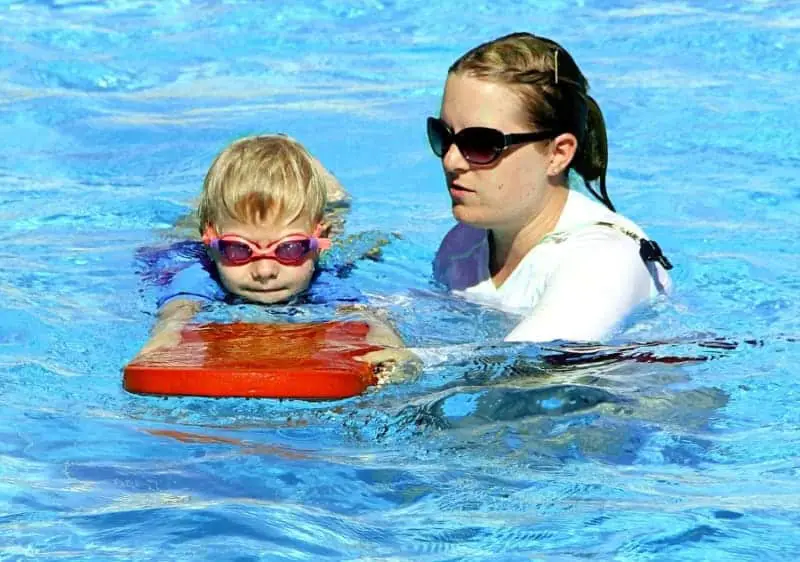
Summary: How To Coach 8 and Under Swimmers
Remember that at this age, students and families are typically going to be trying out a variety of different sports and after-school activities to find which best suit them. Don’t be discouraged if a particular student does not seem engaged or stops coming to class after just a few sessions.
The most important goal should be to instil in each student a love of swimming and knowledge of basic techniques that will benefit them later in life even if they do not continue with swimming as a competitive sport.
This is when you will know your coaching was a success.
Existing coaches, what do you believe is important when teaching 8 and under swimmers?
Cheers,
Daniel

